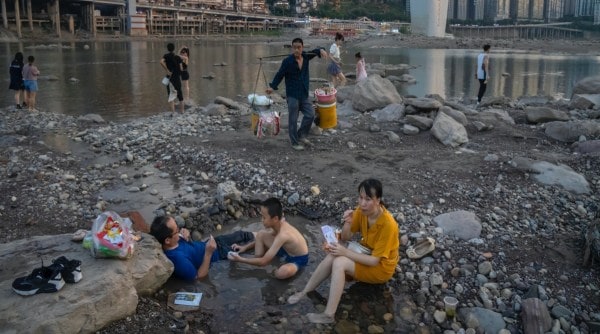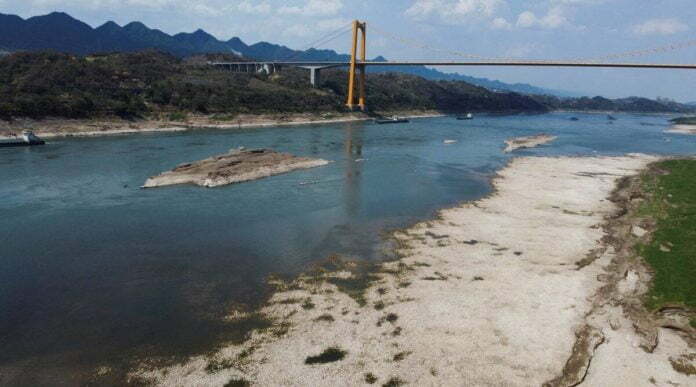[ad_1]
Chinese provinces are planning to spend billions of dollars on new water infrastructure to counter the growing impact of extreme weather on agriculture and hydropower after a record heatwave swept across swathes of the Yangtze River basin.
A prolonged drought in southwestern China has exposed hydropower-dependent regions such as Sichuan to the vulnerability of falling water levels and disrupted power transmission to the rest of the country.
Authorities are also concerned about the impact of low rainfall on the upcoming autumn harvest, with per capita water supplies already only a quarter of the global average, with some suggesting 20 percent of China’s crops could be affected.
Drought-affected areas have been digging emergency wells, deploying firefighters and cloud-seeding rockets to irrigate crops, but governments are also turning to larger, long-term water infrastructure.
“Due to the severity of extreme extreme events, as well as the intensification of floods and droughts, the ability to store and transfer water has become very important,” Mao Liuxi, an expert at the China Meteorological Administration, said on a recent conference call.
The Ministry of Water Resources has approved 25 major projects this year, with a total investment of 1.7 trillion yuan ($246 billion).
Central China’s Hubei province, hit hard by drought on the Yangtze River, began construction on Wednesday on 18 large-scale water projects, with plans to spend 176 billion yuan over the 2021-2025 period.
Last month, Yunnan in southwest China also started construction of four large-scale water storage projects with a total investment of 211.8 billion yuan.
China has long relied on large infrastructure projects to control its rivers. The huge Three Gorges Dam is used not only to generate electricity, but also to regulate the flow of the Yangtze River, on which about one-third of the population depends.
 People sit in a shallow pool in the bed of the Jialing River, a tributary of the Yangtze River in Chongqing city, southwest China, Saturday, Aug. 20, 2022. (Associated Press)
People sit in a shallow pool in the bed of the Jialing River, a tributary of the Yangtze River in Chongqing city, southwest China, Saturday, Aug. 20, 2022. (Associated Press)
China has also been building the ambitious South-to-North Water Diversion Project, and channels have been established in eastern and central China to use water from the Yangtze to replenish the arid north.
“People think there’s always an engineering, infrastructural solution,” said David Shankman, a geographer at the University of Alabama who studies China’s water system. “They try to plan for special situations, but you can’t predict the future.”
block the Yangtze
With about 80 percent of Sichuan’s energy supply coming from hydropower, the drought forced authorities to shut down industries and ration electricity for households.
In response, the China Energy Administration said it would build more grid infrastructure and develop alternative energy sources. It has also vowed to speed up construction of more dams on the upper Yangtze.
In theory, building more upstream hydropower plants, especially in parts of Tibet, where ice melted in spring and summer could be channeled into reservoirs, could help balance seasonal changes in water flow.
China already stores huge amounts of water in its huge reservoirs and says they play an important role in limiting flood damage during the rainy season.
But critics say the projects are costly, environmentally damaging and still subject to unpredictable weather.
“If you’re anticipating a drought, you want to have the highest water capacity, but when you’re anticipating severe flooding, you want to have the lowest water level,” Shankman said. Keep enough water to generate electricity.
Zhou Jinfeng, secretary-general of the China Biodiversity Conservation and Green Development Foundation (CBCGF), an environmental group, said the construction of large-scale water conservancy projects has severely damaged the natural habitat and hydrological functions of the Yangtze River.
“Water projects are neither the best solution nor the only solution,” he said.
[ad_2]
Source link



